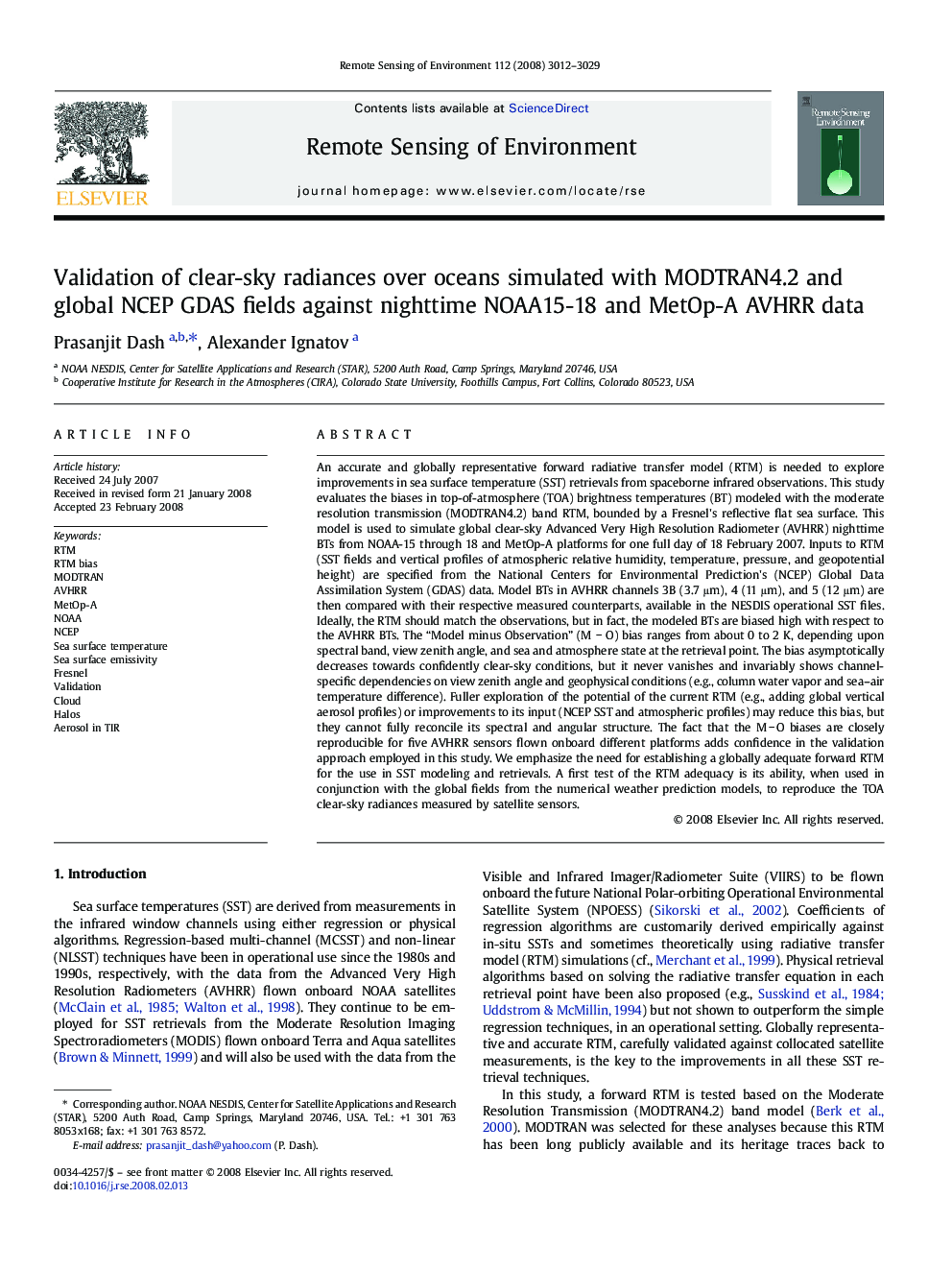| کد مقاله | کد نشریه | سال انتشار | مقاله انگلیسی | نسخه تمام متن |
|---|---|---|---|---|
| 4460262 | 1621328 | 2008 | 18 صفحه PDF | دانلود رایگان |

An accurate and globally representative forward radiative transfer model (RTM) is needed to explore improvements in sea surface temperature (SST) retrievals from spaceborne infrared observations. This study evaluates the biases in top-of-atmosphere (TOA) brightness temperatures (BT) modeled with the moderate resolution transmission (MODTRAN4.2) band RTM, bounded by a Fresnel's reflective flat sea surface. This model is used to simulate global clear-sky Advanced Very High Resolution Radiometer (AVHRR) nighttime BTs from NOAA-15 through 18 and MetOp-A platforms for one full day of 18 February 2007. Inputs to RTM (SST fields and vertical profiles of atmospheric relative humidity, temperature, pressure, and geopotential height) are specified from the National Centers for Environmental Prediction's (NCEP) Global Data Assimilation System (GDAS) data. Model BTs in AVHRR channels 3B (3.7 μm), 4 (11 μm), and 5 (12 μm) are then compared with their respective measured counterparts, available in the NESDIS operational SST files. Ideally, the RTM should match the observations, but in fact, the modeled BTs are biased high with respect to the AVHRR BTs. The “Model minus Observation” (M − O) bias ranges from about 0 to 2 K, depending upon spectral band, view zenith angle, and sea and atmosphere state at the retrieval point. The bias asymptotically decreases towards confidently clear-sky conditions, but it never vanishes and invariably shows channel-specific dependencies on view zenith angle and geophysical conditions (e.g., column water vapor and sea–air temperature difference). Fuller exploration of the potential of the current RTM (e.g., adding global vertical aerosol profiles) or improvements to its input (NCEP SST and atmospheric profiles) may reduce this bias, but they cannot fully reconcile its spectral and angular structure. The fact that the M − O biases are closely reproducible for five AVHRR sensors flown onboard different platforms adds confidence in the validation approach employed in this study. We emphasize the need for establishing a globally adequate forward RTM for the use in SST modeling and retrievals. A first test of the RTM adequacy is its ability, when used in conjunction with the global fields from the numerical weather prediction models, to reproduce the TOA clear-sky radiances measured by satellite sensors.
Journal: Remote Sensing of Environment - Volume 112, Issue 6, 16 June 2008, Pages 3012–3029